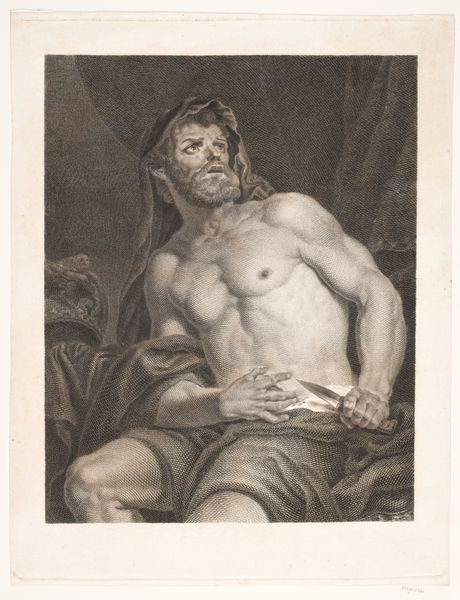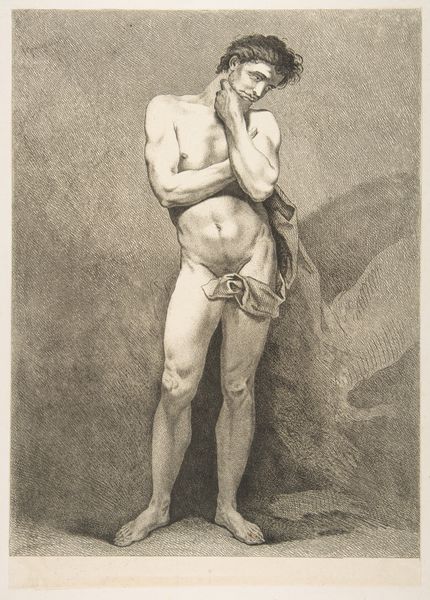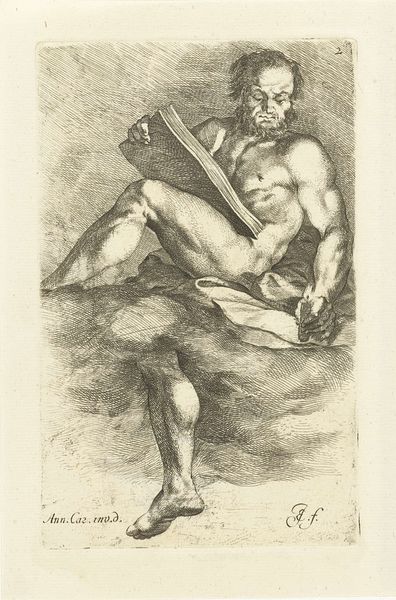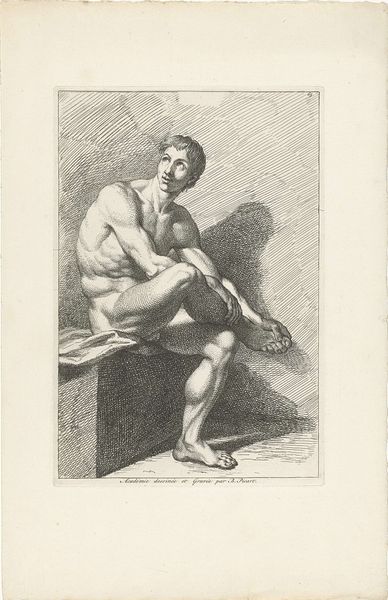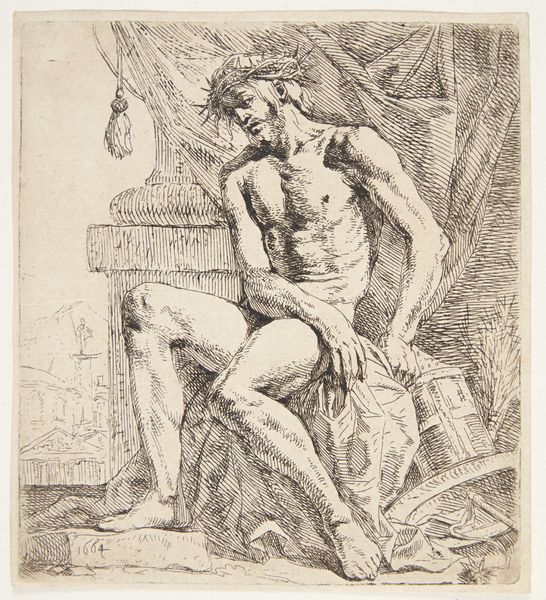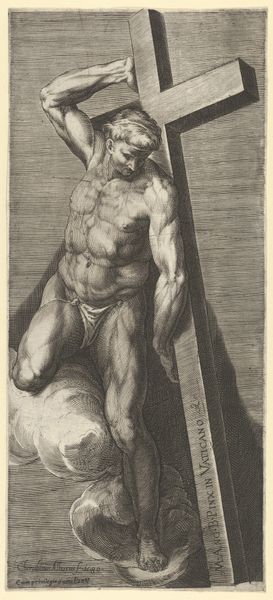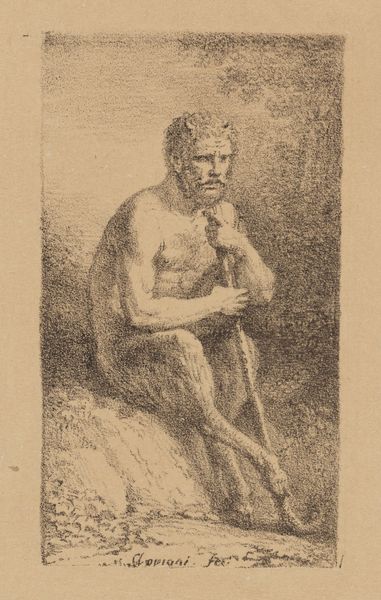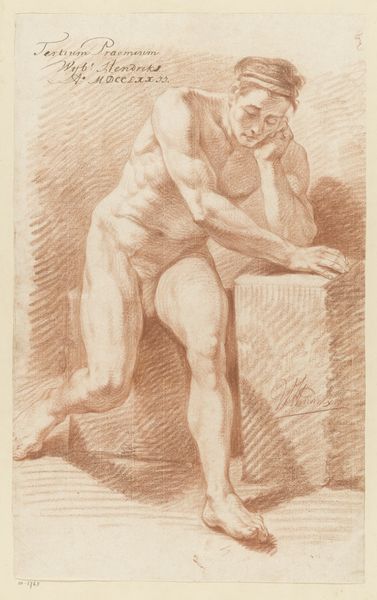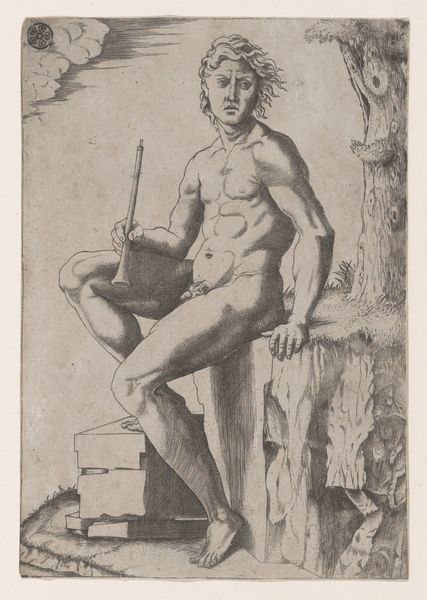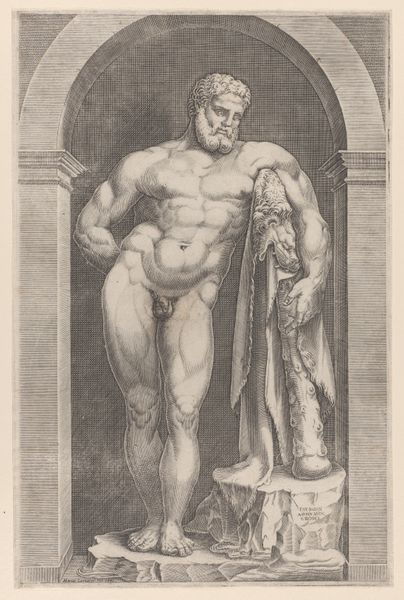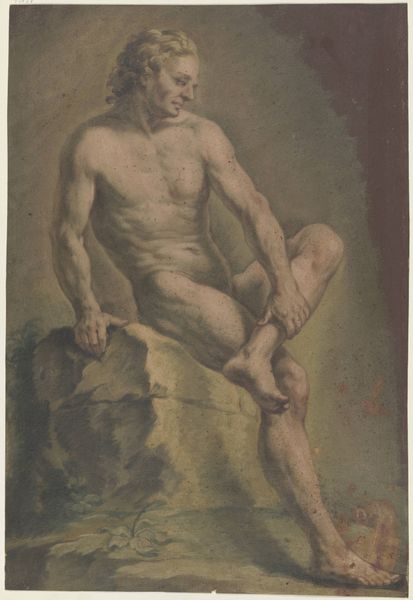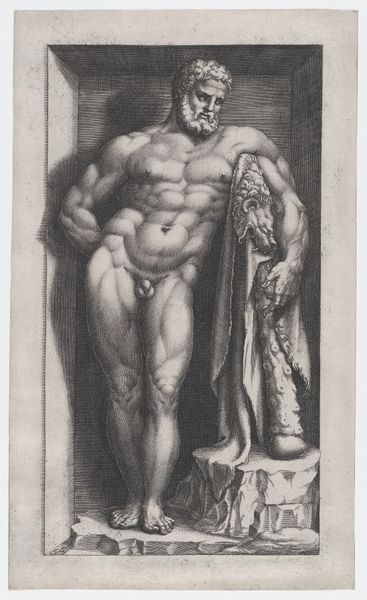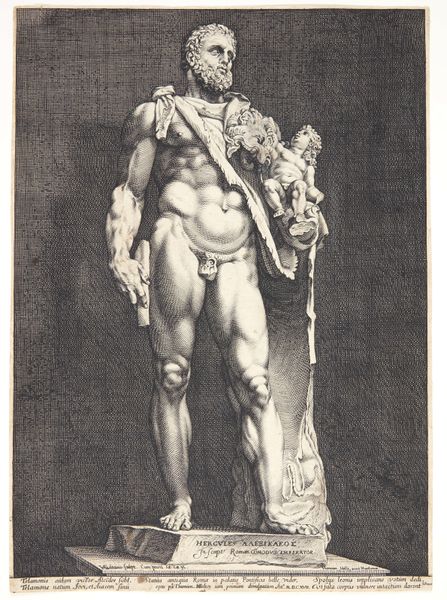
print, engraving
#
portrait
#
neoclacissism
# print
#
figuration
#
form
#
line
#
history-painting
#
engraving
#
realism
Dimensions: 380 mm (height) x 296 mm (width) (plademaal)
Curator: There’s an intense drama unfolding in this engraving by Wilhelm Heuer, titled *Cato*. It’s dated 1814. Editor: My initial reaction? Utter anguish. The dark, shadowed backdrop throws that muscular figure into sharp relief. It's raw, and immediately captivating. The eyes especially. They're wild and pleading, as if looking for divine intervention. Curator: Yes, there’s definitely a plea for salvation in his gaze, isn’t there? Heuer really captures that sense of internal struggle. We can interpret this moment as representative of the figure of Cato the Younger in a crucial moment of his suicide. This particular image ties to larger discussions about honor, and sacrifice that were very potent during the Napoleonic era. Editor: So, tell me more about Cato’s symbolic significance in this specific historical moment. I imagine Neoclassical tastes are a factor here. Curator: Absolutely. Cato was seen as the paragon of republican virtue. His suicide, rather than submission to tyranny, resonated strongly with revolutionary and post-revolutionary societies across Europe. Neoclassicism, of course, found in these classical narratives, the kind of moral fortitude that modern states were believed to require. But, in addition, note how the form itself, that etched line, serves to render an almost ideal, sculpted figure…a timeless aesthetic really, evoking a familiar past and setting an expectation of conduct for present viewers. Editor: And the engraving as medium...prints allowed these images and, by extension, these potent symbols to disseminate rapidly. Was Heuer consciously leveraging this accessibility for broader cultural impact? Curator: Certainly. Prints had a significant role to play in shaping political and cultural discourse in the early 19th century. Disseminating ideals of civic virtue, or exemplars of leadership—of masculinity even— were important for both creating and circulating those cultural touchstones that unify a community. Editor: Thinking about visual symbols carrying meaning through time, what strikes me here is the constancy of the male figure in distress. It speaks to something timeless within the human experience. Curator: Agreed, there’s that enduring resonance of classical figures reinvented for contemporary exigencies. Heuer's *Cato* functions both as an artifact of a specific moment and something deeply archetypal. Editor: I see that now, understanding how deeply historical context infuses this rather stark image, while the engraving also embodies very personal emotions. Curator: Precisely, it's that interplay that I find so powerful, creating the enduring impact this print has.
Comments
No comments
Be the first to comment and join the conversation on the ultimate creative platform.
